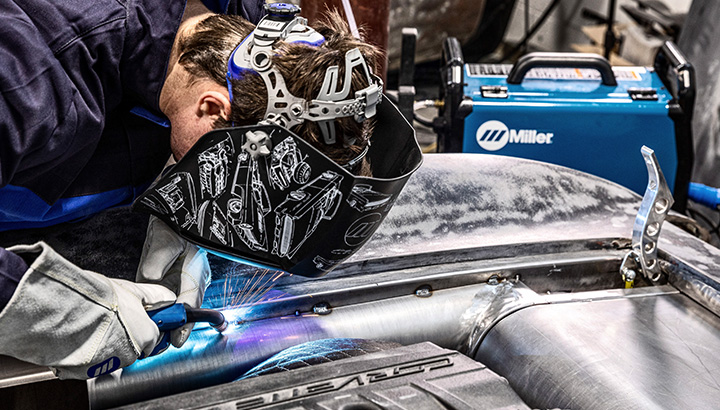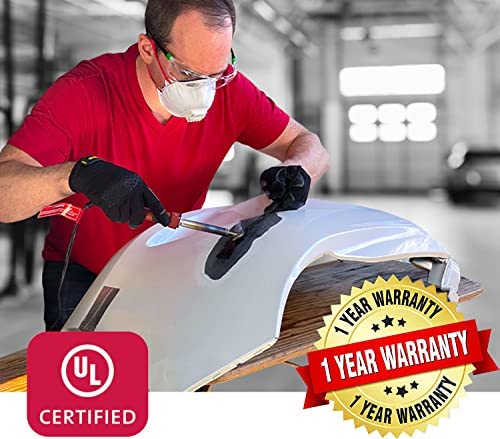All About Welding: Key Insights Into Techniques and Best Practices for Success
Welding encompasses a variety of techniques, each fit for certain products and applications. Recognizing these approaches, such as GMAW, SMAW, and TIG, is important for achieving optimal results. Additionally, the best tools and safety techniques can not be overlooked. As prep work and repairing play crucial duties in the welding process, mastering these elements can significantly boost the quality of the final item. What are the essential elements that ensure an effective weld?
Recognizing Different Welding Techniques
Welding strategies incorporate a range of methods, each suited to specific applications and products. Amongst one of the most usual strategies are Gas Metal Arc Welding (GMAW), Secured Steel Arc Welding (SMAW), and Tungsten Inert Gas Welding (TIG) GMAW, likewise referred to as MIG welding, is preferred for its rate and adaptability, making it excellent for thin materials. SMAW, or stick welding, is preferred for its simplicity and performance in outdoor atmospheres, especially with thicker steels. TIG welding offers accuracy and control, making it appropriate for elaborate work and non-ferrous metals (Montana Mobile Welding and Repair Belgrade Fabrication). Each method has its unique advantages and considerations, allowing welders to select the most effective approach based on the project's requirements, product kind, and desired end results. Comprehending these strategies is crucial for successful welding
Necessary Welding Tools and Devices
While numerous welding techniques require specific skills, the ideal tools and devices are equally necessary for accomplishing quality outcomes. Essential welding devices consists of welding makers, which differ relying on the technique-- such as MIG, TIG, or stick welding. Protective equipment, consisting of handwear covers, headgears, and aprons, warranties safety and comfort during the procedure. On top of that, components and clamps aid safeguard products in position, ensuring accuracy in welds. Consumables like welding poles, wire, and protecting gas are likewise critical components that affect the top quality of the weld. Devices such as grinders and cutters help with surface area prep work and post-weld finishing, adding to an expert end result. Buying high-grade equipment ultimately boosts the performance and efficiency of welding projects.
Safety And Security Practices in Welding
Appropriate safety techniques are essential in the welding market to safeguard employees from prospective threats. Welders need to wear appropriate individual protective tools (PPE), consisting of helmets with appropriate shading, handwear covers, and flame-resistant clothing. Ample ventilation is crucial to minimize direct exposure to dangerous fumes and gases produced throughout the welding process. In addition, workers should be learnt the right handling of welding equipment to stop accidents. Fire precaution, such as keeping flammable materials away from the welding area and having fire extinguishers conveniently offered, are needed. Regular inspections of tools and offices can aid determine potential risks before they bring about accidents. By adhering to these safety methods, welders can produce a more secure working environment and reduce dangers connected with their trade.
Preparing Materials for Welding
Preparing materials for welding is a crucial action that significantly influences the high quality and honesty of the end product (Montana Mobile Welding and Repair Welding). Appropriate preparation includes cleaning up the surface areas to get rid of contaminants such as rust, oil, and dust, which can endanger the weld. Strategies such as grinding, sanding, or using solvents are commonly utilized to achieve a tidy surface area. In addition, making certain that the materials fit together snugly is necessary; spaces can result in weak welds. It's also important to think about the alignment and positioning of the parts, as this will influence the ease of welding and the final outcome. Picking the proper filler material and guaranteeing compatibility with the base metals is necessary for accomplishing strong, sturdy welds.
Tips for Achieving High-Quality Welds
Achieving high-quality welds calls for focus to detail and adherence to finest methods throughout the welding procedure. Proper joint prep work is vital, ensuring surfaces are clean and complimentary from contaminants. Selecting the proper filler product and welding strategy based on the base steels is important for suitable bonding. Keeping constant travel speed and angle while welding can stop flaws and advertise harmony. Additionally, controlling warmth input is crucial; excessive warm can cause bending and damaged joints. Frequently checking the welds throughout the procedure permits prompt adjustments if needed. Utilizing ideal post-weld treatments, such as cleaning and stress and anxiety alleviation, can enhance the sturdiness and integrity of the weld, eventually making certain an effective result.
Fixing Usual Welding Issues
Welding usually presents obstacles that can affect the quality and integrity of the end product. Usual problems such as porosity, irregular weld beads, and overheating can arise, each calling for certain repairing methods. Comprehending these troubles is important for welders to enhance their abilities and achieve perfect outcomes.
Porosity Problems Discussed
Although porosity can frequently be forgotten, it continues to be a critical concern in welding that can endanger the integrity of a finished item. Porosity describes the presence of little gas pockets within the weld grain, which can compromise the joint and lead to premature failing. This problem typically develops from impurities, moisture, or improper protecting gas coverage during the welding procedure. To mitigate porosity, welders should confirm that the base materials are completely dry and clean, make use of ideal protecting gases, and keep constant welding specifications. Frequently examining the tools and environment can likewise aid determine more helpful hints prospective concerns prior to they manifest in the weld. Resolving porosity efficiently is crucial for achieving strong, resilient welds that fulfill top quality criteria.

Inconsistent Weld Beads
Irregular weld grains can substantially influence the high quality and stamina of a finished item. Numerous elements add to this concern, consisting of inappropriate travel speed, incorrect amperage setups, and inconsistent electrode angles. When the welder relocates as well rapidly, a grain may appear slim and lack infiltration, while moving as well slowly can create too much accumulation. Additionally, making use of the wrong amperage can result in either undercutting or excessive spatter, both of which compromise weld honesty. The welder's strategy, such as irregular lantern motion, can likewise result in irregular grain look. To reduce these troubles, welders ought to focus on maintaining constant, regulated motions and making certain proper tools settings to attain uniformity in their welds. Consistency is crucial to attaining strong and trusted welds.
Overheating and Warping Issues
Excessive heat throughout the welding process can bring about considerable overheating and warping issues, influencing the structural honesty of the workpiece. These issues commonly show up as distortion, which can endanger positioning and fit-up, making more assembly challenging. Elements adding to overheating consist of the option of welding criteria, such as voltage and take a trip speed, in addition to the kind of product being bonded. To mitigate these problems, welders must keep regular travel speed and appropriate warm input while checking the work surface temperature level. In addition, pre-heating or post-weld warmth therapy can assist alleviate anxieties brought on by quick air conditioning - Montana Mobile Welding and Repair Belgrade Welding. more tips here Regular inspection and adherence to best practices are important in avoiding overheating and guaranteeing the longevity and reliability of bonded structures
Often Asked Concerns
What Are the Job Opportunities in the Welding Industry?
The welding sector offers diverse career chances, consisting of positions as welders, instructors, examiners, and designers. Experts can operate in production, building, aerospace, and auto sectors, profiting from solid demand and affordable incomes in different roles.
Just How Can I Boost My Welding Rate Without Compromising High Quality?
To improve welding rate without giving up high quality, one ought to practice reliable methods, preserve equipment, enhance setups, and improve hand-eye sychronisation. Routine training and official source seeking feedback can likewise greatly contribute to achieving faster, top notch welds.
What Certifications Are Available for Welders?
Various certifications exist for welders, consisting of those from the American Welding Society (AWS), the National Facility for Building Education And Learning and Research (NCCER), and different industry-specific organizations. These credentials improve employability and demonstrate skill efficiency.
How Does Welding Impact the Qualities of Metals?
Welding influences the residential properties of steels by altering their microstructure, which can lead to adjustments in strength, ductility, and solidity. Warmth input and air conditioning prices throughout the procedure considerably influence these material qualities.
Can I Weld Dissimilar Metals With Each Other?
